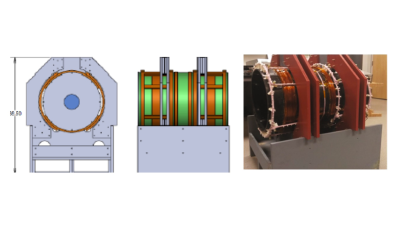|
Plenary Session
Point-of-Care Diagnostics: MR's Friend or Foe? |
|
Point-of-Care Diagnostics: MR's Friend or Foe?
Plenary Session
ORGANIZERS: Catherine Hines, Garry Gold, Arvind Pathak, Kelvin Lim
Wednesday, 20 June 2018 Plenary Hall (Paris Room)
10:45 - 11:45
Moderators: Catherine Hines, Arvind Pathak
Session Number: P-03
Overview
Target Audience
Educational Objectives
As a result of attending this course, participants should be able to:
| |
|
 Combined Session Video - Video is open to the Public Combined Session Video - Video is open to the Public |
10:45
|
|
Competition: Point of Care (POC) Diagnostics
Nimmi Ramanujam
In my talk, I will discuss how disruptive approaches to both technology innovation and health care delivery models could broaden access to preventive services and reduce over utilization of toxic treatments. Point of care technologies will be key to making this shift. My talk will focus on technologies that do not require laboratory environments to support more patient-centered approaches to healthcare delivery. Examples will include portable self-contained devices that detect and treat disease, and can enable the selection of optimal therapies and/or monitor the effectiveness of a specific treatment. Innovations in genetic testing, imaging, theranostics and artificial intelligence that are already growing will be the key to closing the gap.
|
11:05
|
 |
Sustainable Low-field MRI for Point of Care Diagnostics
Steven Schiff
Low-field MRI has been technically feasible for decades, but clinically diagnostic MRI has been dominated by high-field technology. Thus the vast majority of people on earth have no foreseeable access to MRI. We are developing diagnostic low-field MRI, by addressing the hardware and algorithmic challenges that have been barriers to clinical use. An overarching principle is that our designs can be assembled, operated and maintained in developing countries. We initially focus on hydrocephalus – the most common condition in children worldwide that requires brain imaging and neurosurgical treatment. We will define sustainability for such diagnostics using an integrated optimization approach.
|
11:25
|
|
Complement: Implementing MR into the POC Pipeline
Edwin van Beek
The utility of MRI is under pressure for a variety of reasons, but mainly driven by costs containment and lack of accessibility. A number of measures will be needed to allow MRI to flourish in the clinical management domain. These include the use of more focused examinations, optimised timing of investigations and the increased efficiency of imaging departments will be a way forward to improve the value of MRI to a wider population.
This presentation will introduce some concepts on how to improve the value of MRI and use examples of areas where this is starting to impact clinical management and improve cost-effectiveness.
|
11:45
|
|
Adjournment |
|
| Back |
| The International Society for Magnetic Resonance in Medicine is accredited by the Accreditation Council for Continuing Medical Education to provide continuing medical education for physicians. |


